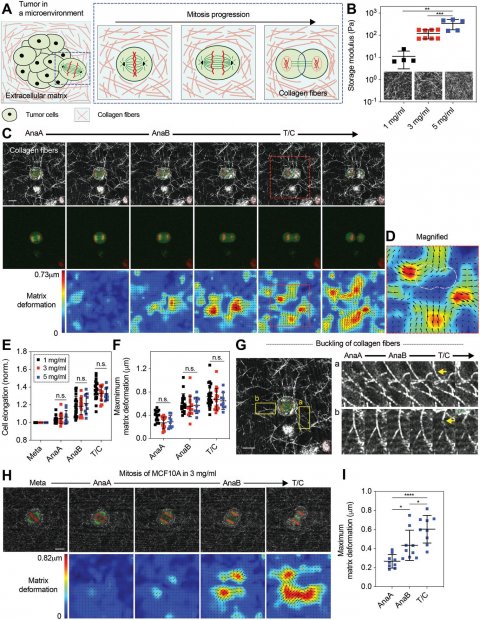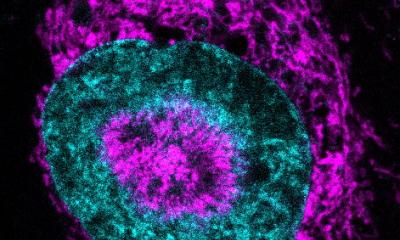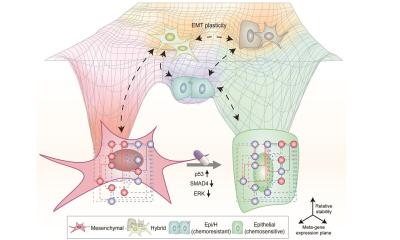Image source: Nam et al., Advanced Science 2021 (CC-BY 4.0)
News • Collagen 'pushing'
Supercomputer illustrates mechanical process of cancer growth
'Comet' enables researchers to show cellular 'pushing' of collagen
According to the World Health Organization, one in six worldwide deaths have been attributed to cancer; however, these fatalities were not due to initial malignant tumors—the deaths were caused by the spread of cancer cells to surrounding tissues and subsequent tumor growth. These tissues, which consist largely of collagen, have been the focus of a recent collaborative study by a team from Stanford University and Purdue University. To accomplish their work, the researchers used the Comet supercomputer at the San Diego Supercomputer Center, located on the UC San Diego campus.

Image source: Nam et al., Advanced Science 2021 (CC-BY 4.0)
“Our code used for this study is computationally expensive, which means it takes lots of time to run one single simulation, and thanks to Comet we could run a large number of simulations simultaneously to explore a wide parametric space,” said Taeyoon Kim, an associate professor at the Weldon School of Biomedical Engineering at Purdue. “Nowadays, it is very challenging to find grants or funds that can be used for buying nodes or time on supercomputers although such computing power is essential for performing this research.”
The study describes the mechanical process of cell division beginning when a mother cell undergoes substantial changes in shape to segregate its chromosomes and other materials before cleaving itself into two daughter cells. Many studies by multiple scholars have focused on the biological aspects of cell division, but this research outlines the process from a mechanical standpoint in a recent Advanced Science journal paper entitled “Cellular Pushing Forces during Mitosis Drive Mitotic Elongation in Collagen Gels”. “Our study focused on cancer cell division as that is what drives the growth of primary and metastatic tumors,” said Ovijit Chaudhuri, an associate professor of mechanical engineering at Stanford. “While the biology of cancer cell division has been studied in great detail, the mechanical aspects of how cells physically divide in tumors is less clear, and advancing understanding of this could lead to new therapies to treat tumors.”
Prior to this research, there had been no study of how cells physically divide in collagen gels. The researchers explored three mechanisms as possible ways for cells to generate the space they need to divide: mitotic elongation, external force generation (pushing), or matrix degradation. This study’s findings singled out the pushing mechanism as the key factor in allowing mitosis to occur. “While this process has been studied extensively on petri dishes – or sheets of plastic – cells in our tissues have to do this while being surrounded by cells and a surrounding scaffold known as the extracellular matrix,” explained Chaudhuri. “In our recent study, we report how the mother cell pushes on its surroundings during division in order to make space for the daughter cells.”
Chaudhuri and Kim worked on this project with Sungmin Nam, who is currently a postdoctoral fellow of cell and tissue engineering at Harvard, and Yung-Hao Lin, a doctoral student in chemical engineering at Stanford. Kim was responsible for computational investigation of mechanical interactions between dividing cells and their surrounding environment. To obtain computational data, he required many simulations of model cells dividing in the collagen matrix, and Comet provided a good option for the work.
Source: San Diego Supercomputer Center (SDSC)
03.03.2021











